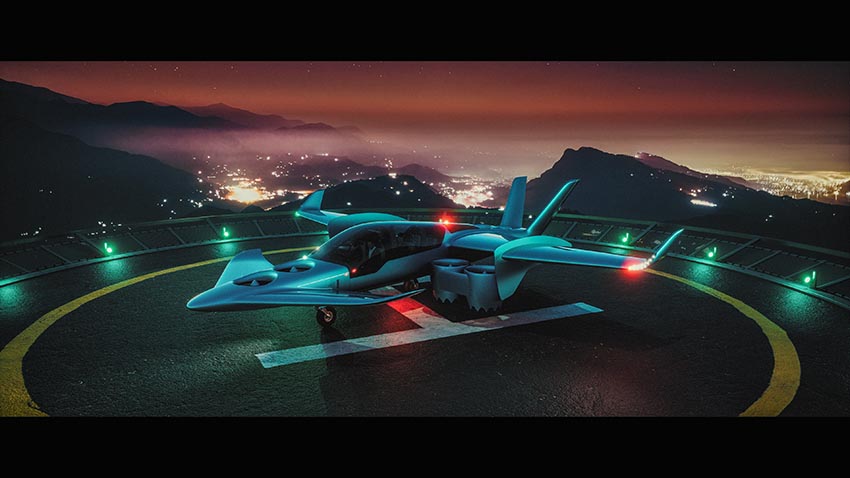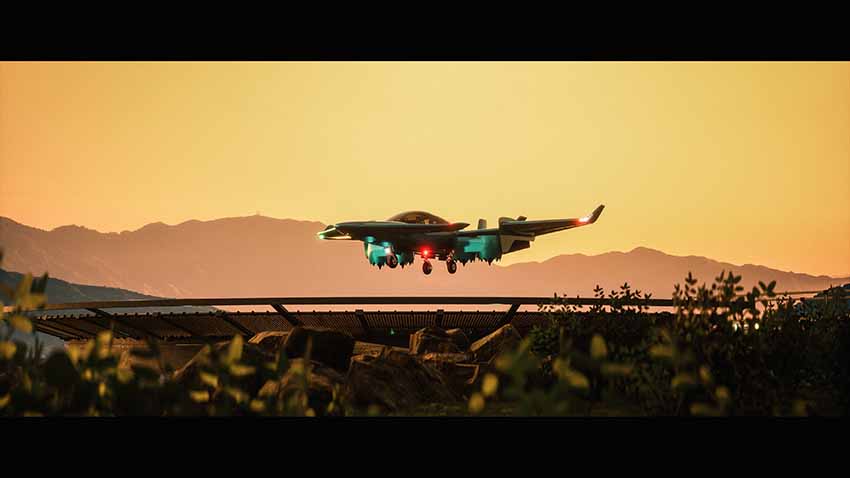Manta Aircraft is a high-tech engineering and design company engaged in the development of multi-purpose aerial platforms and different models of hybrid-electric V/STOL vehicles for advanced air mobility. Company’s innovative and flexible mission in the near future is focused on high-performance high energy-efficient products tailored to customers’ specifications for a wide range of applications and inter-regional operations.
Interview with Juanjo Espinosa, Chief Design Officer & Michael Mesaric, COO of Manta Aircraft.
Easy Engineering: How was 2023 for your business, a short summary?
Juanjo Espinosa & Michael Mesaric: We, at Manta Aircraft, can look back on a very interesting and successful year. We have made significant advances in the general design, and especially in the area of the battery, function of different mission profiles, as well as in the performance calculations. One of our focuses was the key aspect, being now more and more widely adopted, of the hybrid propulsion. We have also been able to secure some valuable partnerships in the industrial and commercial sectors, such as the partnership with the Abu Dhabi Investment Office and joining the exclusive circle of leading OEMs in the Smart and Autonomous Vehicle Industry Cluster (SAVI Abu Dhabi) with the aim of realizing one of AAM’s advanced concepts in the Middle East. We are also particularly pleased to have won a number of exciting awards for our design and product innovation globally.
E.E: What products/services did you launch this year?
J.E & M.M: Aircraft design and manufacturing is a process that spans over several years. This year we have revealed one of the models deriving from our ANN platform: the ANN Plus, a versatile multi-seater, for passenger or cargo transport, optionally piloted, which extends the scalable eV/STOL product range of the ANN platform.
Click the image below for the VIDEO —>

E.E: How did the market change, compared to previous years?
J.E & M.M: The focus on Urban Air Mobility (UAM) kept by most of the players in the field is shifting, because of the progressive acknowledgement of the weakness of the business case, toward the Regional Air Mobility, where Manta was born and has always pursues. With this shift, modifications to the design are consequential, hence we see more OEMs transitioning to the hybrid propulsion, winged solutions and ducted fans. We are happy to see this change, that is a validation of Manta’s initial concept.
E.E: What are the new challenges in your field of activity?
J.E & M.M: The industry, authorities and stakeholders are recognizing growing challenges in the area of high infrastructure needs and limitations, such as implementing a robust UAM infrastructure to meet the need for vertiports, charging infrastructure and air traffic management systems, which require significant investment and coordination, thus limiting timely, widespread deployment. Noise concerns and regulatory hurdles through to certification management are further aspects that primarily affect short-haul operations within cities.

E.E: How did you overcome these challenges in this more competitive environment?
J.E & M.M: We at Manta Aircraft have never believed in the Urban Air Mobility as a profitable long term business case, also due to the technical, infrastructural and regulatory hurdles existing on the way to implement this possible transport system. The target market of Manta has been, since its inception in 2019, the Regional and Inter-regional Air Mobility (RAM), where ranges of some hundred km are required, existing flight navigation rules apply without much need of changes and the need for new infrastructures. We continue along this line, now joined by other OEMs. Moreover, we focus on designing our very-much-airplane-like aircraft with the criteria deriving from the long experience in aircraft certification of our people.
E.E: Tell us about product innovation and how will it impact the future?
J.E & M.M: The innovation here is the availability of an aircraft that can operate as much as possible within the current aviation environment, but offering the possibility to take off and land very close to the departing and destination points of the customer. The platform approach (like in automotive) will guarantee an easy widening of the sectors to which the aircraft will benefit.

E.E: How will product innovation help the customers?
J.E & M.M: For clients engaged in the utility and service aircraft market and business aviation, , the challenge has long been the high operational and maintenance costs associated with helicopters, coupled with the limitations in combination with the use of traditional aircraft confined to runways. Manta Aircraft presents a transformative solution by offering the potential to redefine mission parameters. This entails reducing operational costs significantly while enhancing flexibility by enabling takeoff and landing in unconventional locations. This capability not only provides unparalleled accessibility but also opens up avenues to reach areas that were previously deemed inaccessible.
E.E: What are the industry trends in the markets you are currently active?
J.E & M.M: In the coming years, eV/STOL aircraft are expected to have a significant impact on utility and service applications. At the same time, unmanned drones play a central role in serving society. The trends we see are the move to regional transportation (from urban short haul transportation), the integration within the wider and more general transportation system (ground and air) and the connections to services versus sole the vehicle ownership

E.E: What do you think the trends will be next year?
J.E & M.M: We see four key trends for emerging Advanced Air Mobility: increasing interest in regional applications, the use of hybrid propulsion systems, platform configurations rather than standalone models, and the use of fixed wings and ducted fans. A combination that enables longer distances and heavier payloads for eV/STOL aircraft. This is primarily due to the economics of the application, as flying becomes more efficient than ground transport as flight duration increases, thus offering a more convincing economic argument.
On the one hand, the concept of regional air mobility includes the development of air transport networks that connect smaller cities and communities. This trend aims to bridge the gap between ground transportation and traditional air transportation and make it more convenient for people to travel to and from regions that are not well connected by traditional transportation. On the other hand, eV/STOL aircraft offer the ability to operate independently of traditional infrastructure, providing unprecedented accessibility and making it possible to reach areas that were previously inaccessible or difficult to reach, which is an interesting aspect for private travel, but also for a large number of existing utility and service operations.
This is made possible by hybrid propulsion systems that combine conventional combustion engines with electrical energy. One of the biggest challenges in battery-only aviation is the current limitation of battery technology in terms of energy density. Batteries are still relatively heavy compared to the energy they store. Hybrid propulsion systems address this challenge by incorporating an internal combustion engine that provides enough energy for long flights. This extended range is critical for commercial aviation, particularly long-haul flights that require significant endurance.

Wings play a critical role in electric aircraft, especially when longer ranges are involved, because are more energy efficient than rotors. While the design of traditional fixed-wing aircraft is well established for efficient travel over long distances, the integration of wings into eVTOL designs offers several advantages that contribute to longer ranges – be it aerodynamic efficiency and, above all, reduced energy consumption.
Another trend we see is the development of platforms instead of individual aircraft, which flexibly meet different missions with configuration options or model versions. The versatility in mission profiles allows the operator maximum flexibility and high utilization – and thus economic advantages.
As the aviation industry continues to evolve, these trends will become increasingly impactful in 2024 and beyond, playing a critical role in Advanced Air Mobility – and therefore the future of air transportation.
E.E: What is the outlook for 2024?
J.E & M.M: In addition to implementing new scale flying models and corresponding flight tests, we are working to set up the test bench for the hybrid electric propulsion system. We continue our path to manufacturing the first 1:1 scale prototype.

